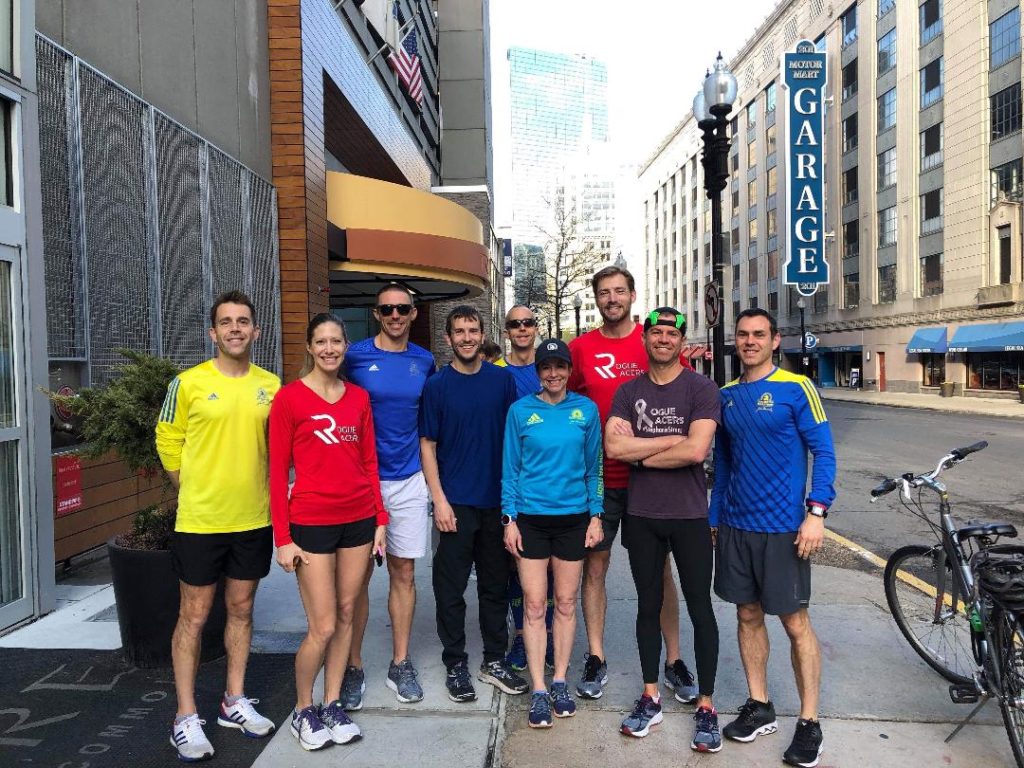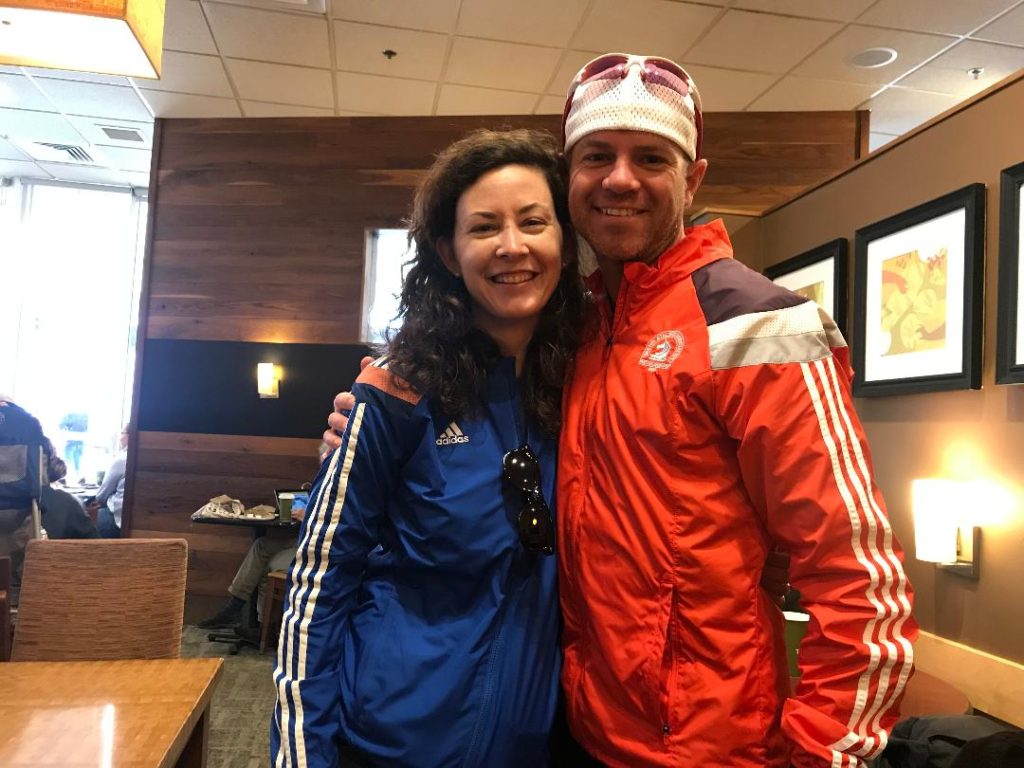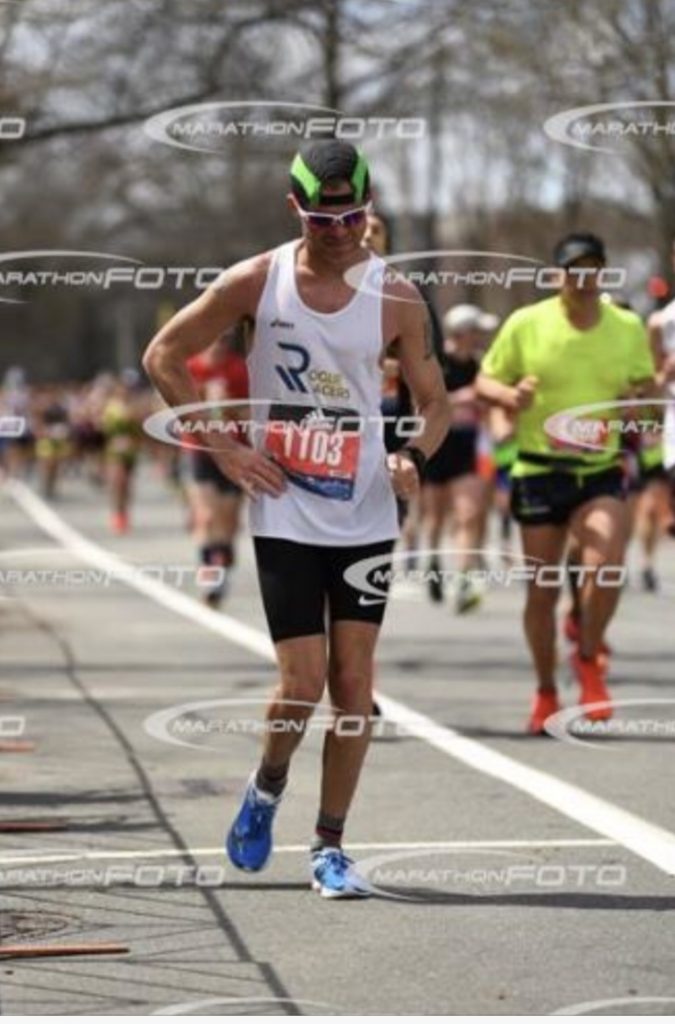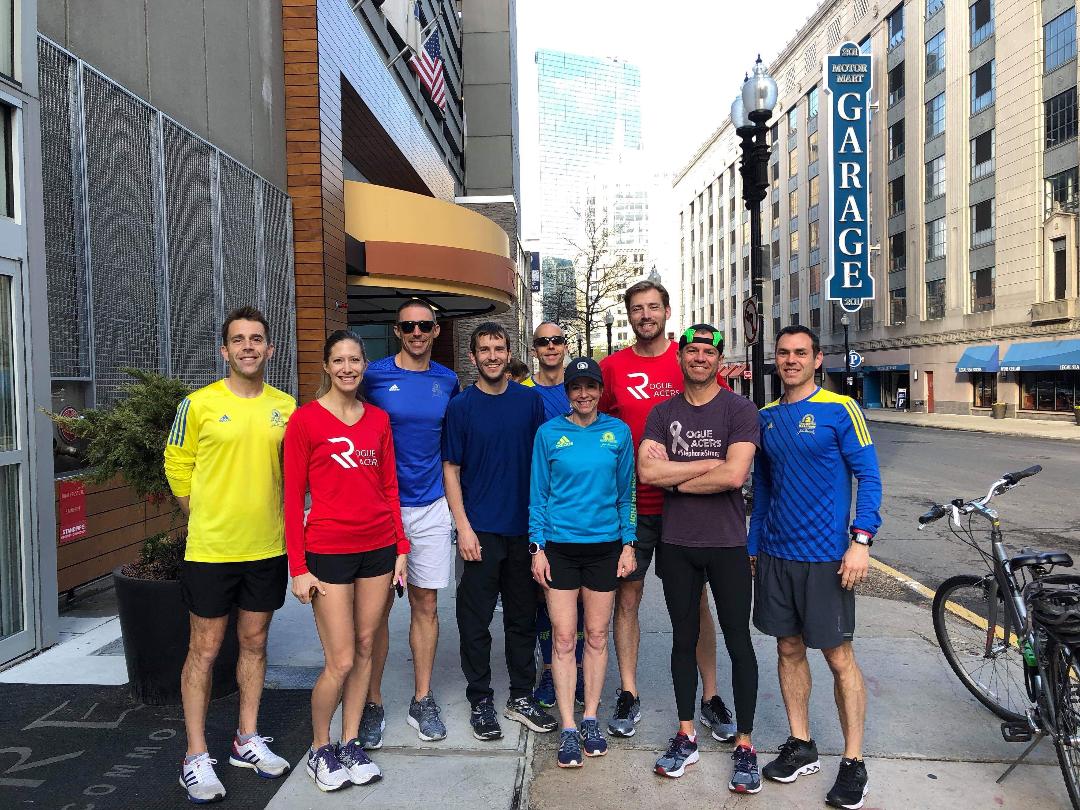By: Bryan S.
Everyone seems to love a happy and uplifting story. Whether it’s news of a friend getting married, a family member accepting a promotion at work, or simply an acquaintance overcoming adversity to accomplish a personal goal. These stories give us inspiration in our own lives, make us smile, and fill our news-feeds. We not only love to read about them, but we love to share these experiences when they happen in our own lives. Sometimes we share them out of exuberance…out of an abundance of sincere joy. Perhaps sometimes we even share them to try to combat the negativity that we otherwise feel, or that we perceive others are feeling. Maybe we are hopeful that it will help us, or others, in these low times. However, it’s likely a rare occasion when we share the not-so-flattering times in our lives. I mean, who wants to portray that anyway? I have certainly been guilty of this. But what if sharing those times turned out to be cathartic to us? In addition, what if, in the process, that sharing also helped someone else dealing with a tough time in his or her life? I wanted to find out.
To me, the marathon represents a lot more than running a race. I have a bond with running that stretches beyond the physical aspect, as I’m sure many runners do. Sure, the physical aspect is wonderful. It feels good to be fit. But I found running (or rather running found me) at a difficult point in my life. I wasn’t always fit, physically or otherwise. Over time, as I poured myself into the sport, I found that both of those conditions (the physical and the mental) continued to improve drastically. That still holds true today. Running, and all that comes along with the lifestyle, has improved my life immeasurably beyond the physical realm. I believe the above insight into my world is important to better understanding this story as it unfolds. It’s partly why I live so highly on the “highs”, and feel so deeply on the “lows”.
The Lead-Up to the Boston Marathon
The “running gods” had certainly smiled down on me in 2017 and 2018. I broke 3 hours at the Boston Marathon in April of 2017 on a hot day, and followed up that performance by breaking 2:50 for the first time at the Indy Marathon that November. I wanted to capitalize on this momentum, and decided I would execute a quick turnaround and race Warm Up Columbus in February of 2018. I took one week off after Indy, and immediately began to ramp my mileage back up. It was the shortest marathon buildup I’d ever attempted, before or since, at 13 weeks. It worked. With my awesome Rogue Racers teammates there to support me, I won the race and ran my current personal best of 2:45:38. I followed up that performance by running 2:48 for the second straight year at Indy. I was happy with my progression and consistency in the marathon over the two-year stretch. I had broken 2:50 in three consecutive attempts. After a brief rest period following Indy, I was ready to set my sights on even bigger goals for 2019. I was starting to feel invincible. However, as many of you know, running has a way of humbling us when we need it.
Registration for the 2019 Boston Marathon took place before I even toed the line at Indy. So when it came time to develop my goals for 2019, I was already well aware that my first marathon of the year would be on a difficult course. However, as I stated earlier, I was feeling bulletproof. My thinking was that if I could run pretty close to my personal best on a hard course like Boston, then that would bode well for even bigger goals at my fall/winter race (I will be running the California International Marathon in early December). It was settled, I would shoot for a 2:45 at Boston. Now that my goal had been set, I needed a plan to get there.
It’s in my nature to experiment with training plans. I like to keep things fresh and challenging. Over the years, I’ve trained with Fleet Feet, McMillan, our team’s plans, and even personally developed plans. I decided this season that I wanted to hire a coach. I was anxious to get a new perspective on training, to see what key workouts others were running, and if they could help me. My coach worked closely with me to come up with a very challenging plan to get me into peak shape by April. In early December, the fun began!
I loved the plan. The workouts were grueling (yes, that’s my idea of fun) and just hard enough to pull me out of my comfort zone, while also within my range. The weeks rolled by, the miles piled up, and my confidence grew. I was right where I wanted to be. My workouts and the data were starting to show increases in my fitness that I had never seen. It’s one thing to see those indications on “paper”, but it’s another to see them in execution.
My first big test came in February. I had registered to run the Warm Up Columbus Half Marathon, and my goal was to run hard. I wanted to see where my fitness was, and what I could reasonably expect to run in April. The morning weather was perfect, to me anyway. I love racing in the cold. My skin does not cool itself efficiently in humid or warm conditions, so the starting temperature in the high 20s was right up my alley. I would be racing with many teammates, and my adrenaline was flowing. We all exchanged well wishes and the gun went off.
I settled into my goal pace, and very quickly realized I would not be in the lead pack. Two of my teammates, Greg and Josh, along with two others bolted out to an aggressive pace. I decided to stay with my plan, and eased back into the “chase” pack. I use that term loosely, because none of us had any hope of catching those four.
I wanted consistency in my splits on this day, and I got it. In addition, I got a huge boost of confidence. I held a 5:54 average pace, with nothing faster than 5:48 and nothing slower than 5:57. I finished in 5th place with a 1:17:58. I felt strong throughout, and finished the final quarter mile in a 5:24 pace. Things were feeling good and coming together. This result indicated that a 2:45 was well within my range for April. Not long after, however, a red flag popped up.
Part of distance running, or any endurance sport, is to endure discomfort. If you can’t endure long bouts of discomfort, then the marathon is not for you. However, as many of you can attest, a very fine, ever-present line separates general discomfort from injury. We push to the limits of this line constantly in our training, and usually I get it right. This time, I did not.
About 6 weeks out from Boston, I noticed a tight feeling in my lower abdomen after a particularly hard-effort long run. I didn’t think too much of it at the time, since I’d never had that sensation before. I chalked it up to minor tightness that would eventually “work itself out”, and I continued on. The discomfort progressed from post-run tightness, to a slight aching towards the end of my runs over the next week. 5 weeks out from Boston, I decided to see a doctor. I first went to my family doctor, who after an exam diagnosed my situation as a strained abdominal muscle. Given that this was a relatively vague diagnosis, I decided to take things a step further and see a sports medicine doctor at Max Sports/Ohio Health. An even more thorough examination resulted in a similar, but more specific diagnosis of a strained rectus abdominis. I was honest with the doctor. I told him that I was 5 weeks out from Boston, and I intended to continue my training and still run the race. He understood, to an extent. His response was that I could continue to run on the injury as long as I could handle the discomfort, but that no healing would take place without full rest. I decided that I would run Boston, and then take all the time I needed to heal. So with that, we came up with a plan to go into an early taper, and also decrease the intensity and frequency of my speed sessions, down from two per week, to only one. I worked with my coach, who immediately adjusted my plan to fit the doctor’s recommendations given my new situation. My training continued, but the damage had been done.

Perhaps the decrease in mileage helped hold the worst of the injury at bay for a while. 4 weeks out I was scheduled to race the Scioto Miles 10k as my last hard, race effort. I ran well, and won the race. Similar to my execution at Warm Up, I kept the miles very consistent while averaging a 5:45 pace, which was very close to a personal best. In addition, just like at Warm Up, I closed fast by running the last quarter mile in 5:18 pace. All things still pointed to a 2:45 at Boston. During the race, with the adrenaline pulsing through my body, I didn’t feel the discomfort of my injury. Except this time, when the race was over, I felt it. A deep ache in my lower abdomen. I was able to take solace, however, in the fact that I felt nothing in the heat of the race. So maybe, if I could get to the start line in Boston in one piece, the race day adrenaline would carry me. Then! Then I would rest!
The final four weeks leading up to Boston were filled with a swirl of emotions and thoughts. Some days I would finish a run and feel like I might be ok. Other days, despite my internal pep talks, I would finish my run and feel an overwhelming panic that I was in trouble. For the record, had I been training for any race other than Boston, I would have pulled the plug after my diagnosis and allowed myself to heal. But this was Boston! I pushed on. 3 weeks out, still able to run. 2 weeks out, keep pushing the discomfort aside and press on. Before I knew it, it was time to head east.
Boston Marathon 2019

Despite the back and forth with the devil and the angel on either shoulder, I arrived in Boston with a renewed sense of possibility. There is just something about that city and that race. My mindset was rebounding. I was giving myself a chance. And if the city itself wasn’t enough to renew my spirits, I got a rather significant and joyous surprise when my wife arrived in Boston unannounced! She had been in China on business the previous two weeks. We were set to fly back into Columbus on the same day after the race, me from Boston and her from Detroit by way of Shanghai. Instead, she was able to finish her work earlier than expected, and she caught a flight to Boston. Just three years earlier, we were married the Friday before the Boston Marathon, and we both celebrated by running the historic route from Hopkinton to Boston. Now, she was back in Boston with me, and we would celebrate our anniversary on the day of the race! It seemed that things were falling right into place.
Ah, but that injury. My mind had rebounded, but as much as I tried to pretend otherwise, I was still running on borrowed time.
Race morning weather was not ideal to say the least. Not as brutal as the year before, but in true Boston fashion we would not have a good weather day. Sitting around in the soppy Athlete’s Village awaiting our call to the corrals, I tried to focus. Usually, I plan things out to the n-th degree. However, I made a mistake on this morning. It wasn’t a huge mistake, but one large enough to have an effect. I always bring my race shoes with me to the start, keeping them covered and dry until changing into them just before the start. However, this time, I forgot dry socks. I pulled my socks off immediately upon arrival in Athlete’s Village, and tried to dry them the best I could. They were drenched from the early morning downpour while waiting on the buses to take us to Athlete’s Village. However, when it came time to head to the start, they were still damp. My dry shoes immediately felt uncomfortable. Right off the bat, things were going to be far from ideal. I tried to draw on the stoicism my wife so effortlessly seems to practice. Control the things you can, don’t worry about the things you cannot. It was time to race.
The gun went off for the 123rd running of the Boston Marathon! I crossed the start line, clicked the start button on my watch, and down the hill we went.
The first few miles flew by effortlessly. My goal was to race the first half slightly slower than goal pace, conserving energy on the early downhills. Then slowly pick up pace until I reached the hills of Newton, giving myself some leeway on the ups, and bringing my pace back down to goal pace for the finish. I mimicked the pacing trend that I had used in the 2017 edition of Boston, where I had run well. I just adjusted that trend for my current paces. I came through both 5k and 10k right where I needed to be. I picked up the pace just a bit after 10k, and gained a few seconds by the time I hit 15k.
The morning was wet, humid, and much warmer than I would prefer for the marathon. I wish I could blame what happened next on the weather, but I never got to the point in the race where weather would become an issue.
The distant buzzing in my ear let me know I was approaching the famed “scream tunnel” of Wellesley College, the women’s college just shy of the halfway point known for the ear-piercing decibel level of its screaming students. As I came through the half, I realized I was starting to feel mounting discomfort in my lower ab area, the area of my injury. Leading up to the race, I was hoping I could hold off this feeling until well after mile 20, then I could “gut out” the finish and still run a fast time. Mile 13 was way too early to have this feeling. I started getting a bit nervous. I tried to push it out of my mind, and I pressed on.
I came through the halfway point about 45 seconds behind goal schedule. No biggie, that wouldn’t be a deal breaker. But the fact that this ab discomfort was mounting made me nervous. I stayed pretty steady throughout the miles between Wellesley and mile 16, where the biggest and steepest drop on the course occurs. I ran mile 16 in 6:17, and was very happy about that. As soon as you bottom out at the end of mile 16, you immediately start that first climb of the Newton hills. There are four hills in total, and it culminates with the cresting of Heartbreak Hill at mile 20.5. As I started the climb of that first hill on 17, it really hit. The discomfort became pain, and I started realizing that I was having trouble with my forward leg swing. Every step forward was engaging the problem area. I quickly realized there was no way to sugar coat the situation; I was in trouble now.
Leading up to the race, I had been reading Meb Keflezighi’s new book 26 Marathons, a quick journey through his impressive career that included an Olympic silver medal in the 2004 Olympic marathon, wins in New York and Boston, and competitive running that stretched into his early 40s. One thing he discussed concerning goal setting was setting alternate goals. I have always established an A and B goal for race day, but he discussed taking it a step further and creating even more. That way, if things start to fall apart mid race, you still have something to shoot for. It keeps you from all together giving up. This cascading of goals immediately came to my mind when I realized my A goal was no longer in reach. I needed a reason to push on. Goal B was on deck: break 2:50.
I came down the backside of the second hill on mile 19, and was able to slightly pick up the pace again. But as soon as the climb at 20 commenced, the pain got even worse. By the time I crested 20, more cascading had occurred, and my goal was now to stay under 3 hours. This was concerning since I hadn’t even crested Heartbreak yet! I knew that last hill was going to be a bear, and I knew I was going to be slow. I just put my head down, forgot about pace, and just focused on getting to the top. I knew the downhill on the backside of Heartbreak could possibly give me a glimmer of hope if I could just get there without having my will totally broken. A local competitor and friend from Columbus tapped my shoulder as he passed me on the way up, and gave me words of encouragement. We had discussed running together in the weeks leading up the race. How I wish I could have followed along behind him now. I got to the top in what was my slowest mile of the day so far. Little did I know what was coming.

When I was barely able to increase my pace on the downhill after Heartbreak, I suspected that breaking 3 hours was no longer a possibility either. At this point, every forward leg swing and every impact of my footfall would send pain pulsing through my mid-section. I had two goals left. First and foremost, I would not, under any circumstance, drop out. Boston was too special, and it deserved more from me than a DNF (Did Not Finish). Second, don’t walk. At this point, it wouldn’t have mattered much if I did, but I was clinging to anything that would help me salvage a quickly unraveling day. I found that putting direct pressure on the lower ab area helped a bit with the pain, so I started squeezing the injured area with my hand and alternated sides for the rest of the race as I shuffled along.
Somewhere around mile 23 or 24, my Rogue Racers teammates who were finishing strong began to pass me one by one, including Jen who finished as the top female out of Ohio. Brian C gave me a vote of confidence as he passed, and encouraged me to go with him, but that wasn’t possible. I wanted to cheer them on, but I had nothing left to do so. I hobbled on with the help of the wonderful Boston fans who lined the course. I used their encouragement to keep putting one foot in front of the other, through Brookline, past the famous Citgo sign that signifies you are one mile from the finish, and finally to the most famous two turns in marathoning…Right on Hereford, left on Boylston.
2 years ago, when I broke 3 hours at Boston, I made that turn onto Boylston, and commenced a kick that took me down the final stretch in a 5:48 pace. All of that elation was nowhere to be found today, as I did my best to honor everything that is the Boston Marathon by pushing myself down that amazing finishing stretch. I crossed the line in exactly 3:17:00.
Post-Race Reflection
It’s been two weeks now since I crossed that finish line. I’ve had some time to reflect. I’ve asked myself, what makes a race a success or a failure? Is race success binary? I can say that for me, it is. For me, success is tied directly to the goals I set at the beginning of each season, for better or worse. Either I hit them or I don’t. We all have different goals in this wonderful sport that we share, and that’s what makes our sport special, I think. One goal isn’t more legitimate or noble than any other in my opinion. I didn’t hit the goal I set for myself, far from it actually. And that’s ok, but it’s also ok to mourn that shortcoming. I can’t move forward until I’ve addressed my disappointment head on. I need that in order to put the experience behind me, and put myself in a position to reach future goals. As someone wiser than me once said, you can’t expect to perform well in your next marathon until you’ve put the previous one behind you… or something to that effect. The hard part is realizing when that period of healthy mourning has passed, and when it’s time to move forward. However, it must be done.
Our family, friends and peers around us are encouraging, and it’s a beautiful thing. I’m so thankful for it. In an attempt at consolation, you might hear things like “but you finished!”, or “you still ran a good time!” That’s enough right? Maybe it is, sometimes. But sometimes it’s of no consolation at all. Regardless of how we feel, or how we view these points of view, we are not absolved from handling our disappointment with grace. I will admit, I’m still working on this and I know that sometimes I fail. But the words of encouragement following a poor performance mean just as much to me, if not more, than the words of congratulations following a good one.
After the race, my coach reminded me that our progress in racing is not linear. It couldn’t possibly be. There are too many variables surrounding the marathon that we have no control over to have each race be better, faster, or more efficient than the previous. So what’s my take away from this? We are owed nothing. Keep getting back up. Keep working hard and showing up. So, I will rest up, I will heal up, and I will be back!



